Fatigue Crack Propagation on Uniaxial Loading of Biaxially Predeformed Pearlitic Rail Steel
Abstract
:1. Introduction
2. Material and Methods
2.1. Material
2.2. Predeformation and Reprofiling
2.3. Mechanical Testing
2.3.1. Uniaxial Fatigue Crack Propagation
2.3.2. Crack Measurement
2.4. Characterization Methodology
2.4.1. Shear Strain Measurement
2.4.2. Hardness Measurement
3. Results
3.1. Hardness and Shear Strain
3.2. Microstructure Characterization
3.3. Crack Length
3.4. Crack Path
4. Discussion
4.1. Crack Propagation Resistance
4.2. Crack Path
5. Conclusions
- Predeforming test bars by twisting under compression significantly increases the fatigue crack propagation resistance for stress controlled, constant amplitude loading;
- The amount of predeformation has very limited effect on fatigue crack propagation resistance when comparing the predeformed states PD3 and PD6;
- The direction of surface crack growth in the predeformed states PD3 and PD6 does not follow the direction of the overall microstructure alignment;
- The crack paths in both undeformed and predeformed material was tortuous.
Supplementary Materials
Author Contributions
Funding
Data Availability Statement
Conflicts of Interest
Appendix A


References
- Magel, E.; Mutton, P.; Ekberg, A.; Kapoor, A. Rolling contact fatigue, wear and broken rail derailments. Wear 2016, 366–367, 249–257. [Google Scholar] [CrossRef]
- Haidemenopoulos, G.N.; Zervaki, A.D.; Terezakis, P.; Tzanis, J.; Giannakopoulos, A.E.; Kotouzas, M.K. Investigation of rolling contact fatigue cracks in a grade 900A rail steel of a metro track. Fatigue Fract. Eng. Mater. Struct. 2006, 29, 887–900. [Google Scholar] [CrossRef]
- Toribio, J.; González, B.; Matos, J.C.; Ayaso, F.J. Influence of Microstructure on Strength and Ductility in Fully Pearlitic Steels. Metals 2016, 6, 318. [Google Scholar] [CrossRef]
- Jabłońska, M.; Lewandowski, F.; Chmiela, B.; Gronostajski, Z. Advanced Heat Treatment of Pearlitic Rail Steel. Materials 2023, 16, 6430. [Google Scholar] [CrossRef]
- Fei, J.; Zhou, G.; Zhou, J.; Zhou, X.; Li, Z.; Zuo, D.; Wu, R. Research on the Effect of Pearlite Lamellar Spacing on Rolling Contact Wear Behavior of U75V Rail Steel. Metals 2023, 13, 237. [Google Scholar] [CrossRef]
- Hyzak, J.M.; Bernstein, I. The role of microstructure on the strength and toughness of fully pearlitic steels. Met. Trans. A 1976, 7, 1217–1224. [Google Scholar] [CrossRef]
- Guo, N.; Liu, Q. Back-scattered electron imaging combined with EBSD technique for characterization of pearlitic steels. J. Microsc. 2012, 246, 221–228. [Google Scholar] [CrossRef] [PubMed]
- Pointner, P.; Joerg, A.; Jaiswal, J. Definitive Guidelines on the Use of Different Rail Grades, INNOTRACK, Project Number. TIP5-CT-2006-031415; 2009 Technical Report. Available online: https://api.semanticscholar.org/CorpusID:148564871 (accessed on 7 October 2023).
- Maya-Johnson, S.; Ramirez, A.; Toro, A. Fatigue crack growth rate of two pearlitic rail steels. Eng. Fract. Mech. 2015, 138, 63–72. [Google Scholar] [CrossRef]
- Alwahdi, F.A.; Kapoor, A.; Franklin, F.J. Subsurface microstructural analysis and mechanical properties of pearlitic rail steels in service. Wear 2013, 302, 1453–1460. [Google Scholar] [CrossRef]
- Dylewski, B.; Risbet, M.; Bouvier, S. Experimental Characterization of the Tridimensional Gradient of Microstructure Induced by RCF in the Rolling Band of Rails. Procedia Eng. 2015, 133, 202–210. [Google Scholar] [CrossRef]
- Eden, H.C.; Garnham, J.E.; Davis, C.L. Influential microstructural changes on rolling contact fatigue crack initiation in pearlitic rail steels. Mater. Sci. Technol. 2005, 21, 623–629. [Google Scholar] [CrossRef]
- Masoumi, M.; Ariza, E.A.; Sinatora, A.; Goldenstein, H. Role of crystallographic orientation and grain boundaries in fatigue crack propagation in used pearlitic rail steel. Mater. Sci. Eng. A 2018, 722, 147–155. [Google Scholar] [CrossRef]
- Dylewski, B.; Risbet, M.; Bouvier, S. The tridimensional gradient of microstructure in worn rails—Experimental characterization of plastic deformation accumulated by RCF. Wear 2017, 392–393, 50–59. [Google Scholar] [CrossRef]
- Fletcher, D.I.; Franklin, F.J.; Kapoor, A. Rail surface fatigue and wear. In Wheel-Rail Interface Handbook; Woodhead Publishing Ltd.: Cambridge, UK, 2009; pp. 280–310. [Google Scholar] [CrossRef]
- Johnson, K.L. The Strength of Surfaces in Rolling Contact. Proc. Inst. Mech. Eng. Part C Mech. Eng. Sci. 1989, 203, 151–163. [Google Scholar] [CrossRef]
- Cannon, D.F.; Edel, K.O.; Grassie, S.L.; Sawley, K. Rail defects: An overview. Fatigue Fract. Eng. Mater. Struct. 2003, 26, 865–886. [Google Scholar] [CrossRef]
- Hohenwarter, A.; Taylor, A.; Stock, R.; Pippan, R. Effect of large shear deformations on the fracture behavior of a fully pearlitic steel. Metall. Mater. Trans. A Phys. Metall. Mater. Sci. 2011, 42, 1609–1618. [Google Scholar] [CrossRef]
- Wetscher, F.; Stock, R.; Pippan, R. Changes in the mechanical properties of a pearlitic steel due to large shear deformation. Mater. Sci. Eng. A 2007, 445–446, 237–243. [Google Scholar] [CrossRef]
- Kammerhofer, C.; Hohenwarter, A.; Scheriau, S.; Brantner, H.P.; Pippan, R. Influence of morphology and structural size on the fracture behavior of a nanostructured pearlitic steel. Mater. Sci. Eng. A 2013, 585, 190–196. [Google Scholar] [CrossRef]
- Leitner, T.; Trummer, G.; Pippan, R.; Hohenwarter, A. Influence of severe plastic deformation and specimen orientation on the fatigue crack propagation behavior of a pearlitic steel. Mater. Sci. Eng. A 2018, 710, 260–270. [Google Scholar] [CrossRef]
- Leitner, T.; Hohenwarter, A.; Pippan, R. Anisotropy in fracture and fatigue resistance of pearlitic steels and its effect on the crack path. Int. J. Fatigue 2019, 124, 528–536. [Google Scholar] [CrossRef]
- Meyer, K.A.; Ekh, M.; Ahlström, J. Modeling of kinematic hardening at large biaxial deformations in pearlitic rail steel. Int. J. Solids Struct. 2018, 130–131, 122–132. [Google Scholar] [CrossRef]
- Meyer, K.A.; Ekh, M.; Ahlström, J. Anisotropic yield surfaces after large shear deformations in pearlitic steel. Eur. J. Mech. A/Solids 2020, 82, 103977. [Google Scholar] [CrossRef]
- Nikas, D.; Zhang, X.; Ahlström, J. Evaluation of local strength via microstructural quantification in a pearlitic rail steel deformed by simultaneous compression and torsion. Mater. Sci. Eng. A 2018, 737, 341–347. [Google Scholar] [CrossRef]
- Meyer, K.A.; Nikas, D.; Ahlström, J. Microstructure and mechanical properties of the running band in a pearlitic rail steel: Comparison between biaxially deformed steel and field samples. Wear 2018, 396–397, 12–21. [Google Scholar] [CrossRef]
- Zhang, X.; Godfxhorey, A.; Hansen, N.; Huang, X. Hierarchical structures in cold-drawn pearlitic steel wire. Acta Mater. 2013, 61, 4898–4909. [Google Scholar] [CrossRef]
- Ivanisenko, Y.; Lojkowski, W.; Valiev, R.Z.; Fecht, H.J. The mechanism of formation of nanostructure and dissolution of cementite in a pearlitic steel during high pressure torsion. Acta Mater. 2003, 51, 5555–5570. [Google Scholar] [CrossRef]
- Jessop, C.; Ahlström, J.; Persson, C.; Zhang, Y. Damage evolution around white etching layer during uniaxial loading. Fatigue Fract. Eng. Mater. Struct. 2020, 43, 201–208. [Google Scholar] [CrossRef]
- Gigan, G.; Norman, V.; Ahlström, J.; Vernersson, T. Thermomechanical fatigue of grey cast iron brake discs for heavy vehicles. Proc. Inst. Mech. Eng. Part D J. Automob. Eng. 2019, 233, 453–467. [Google Scholar] [CrossRef]
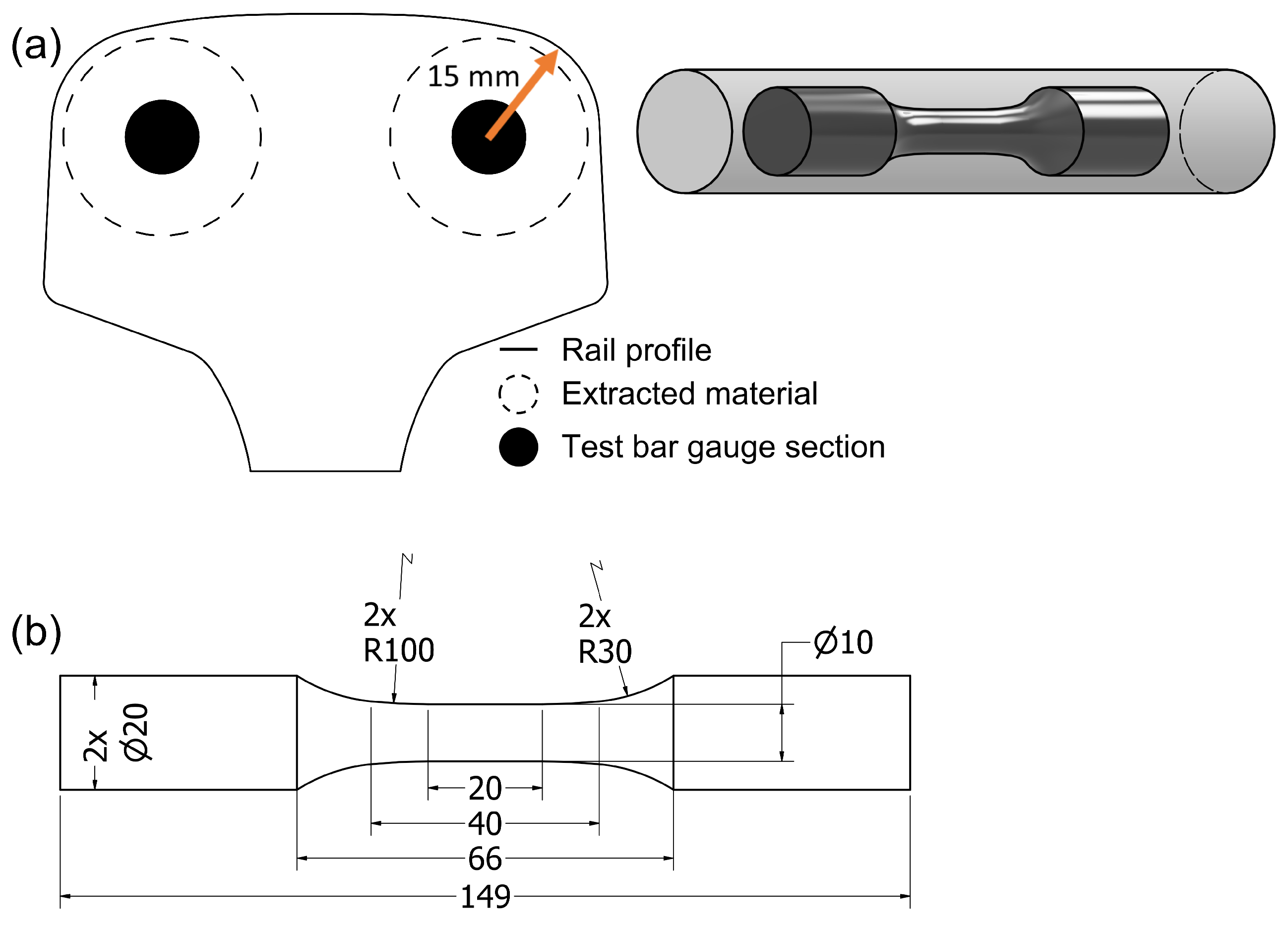


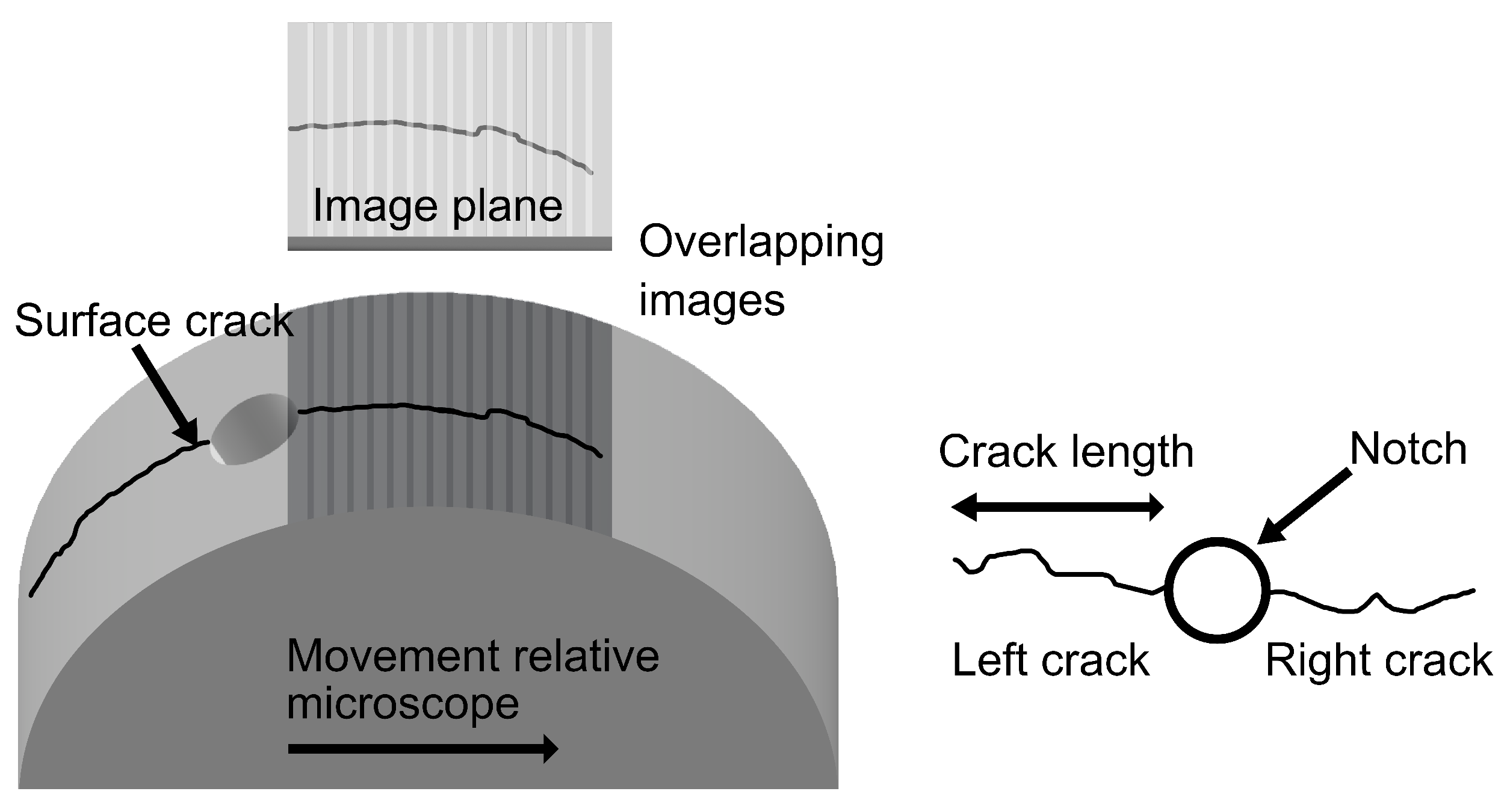
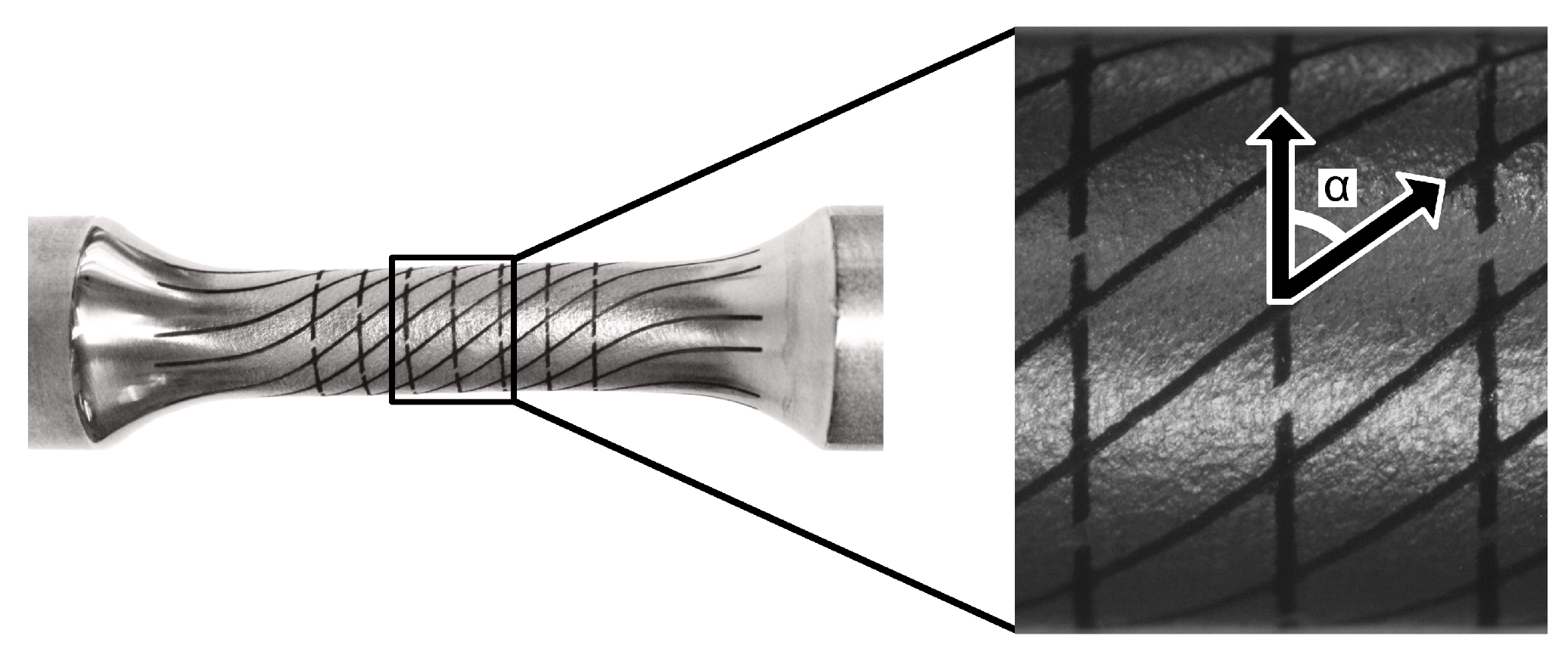
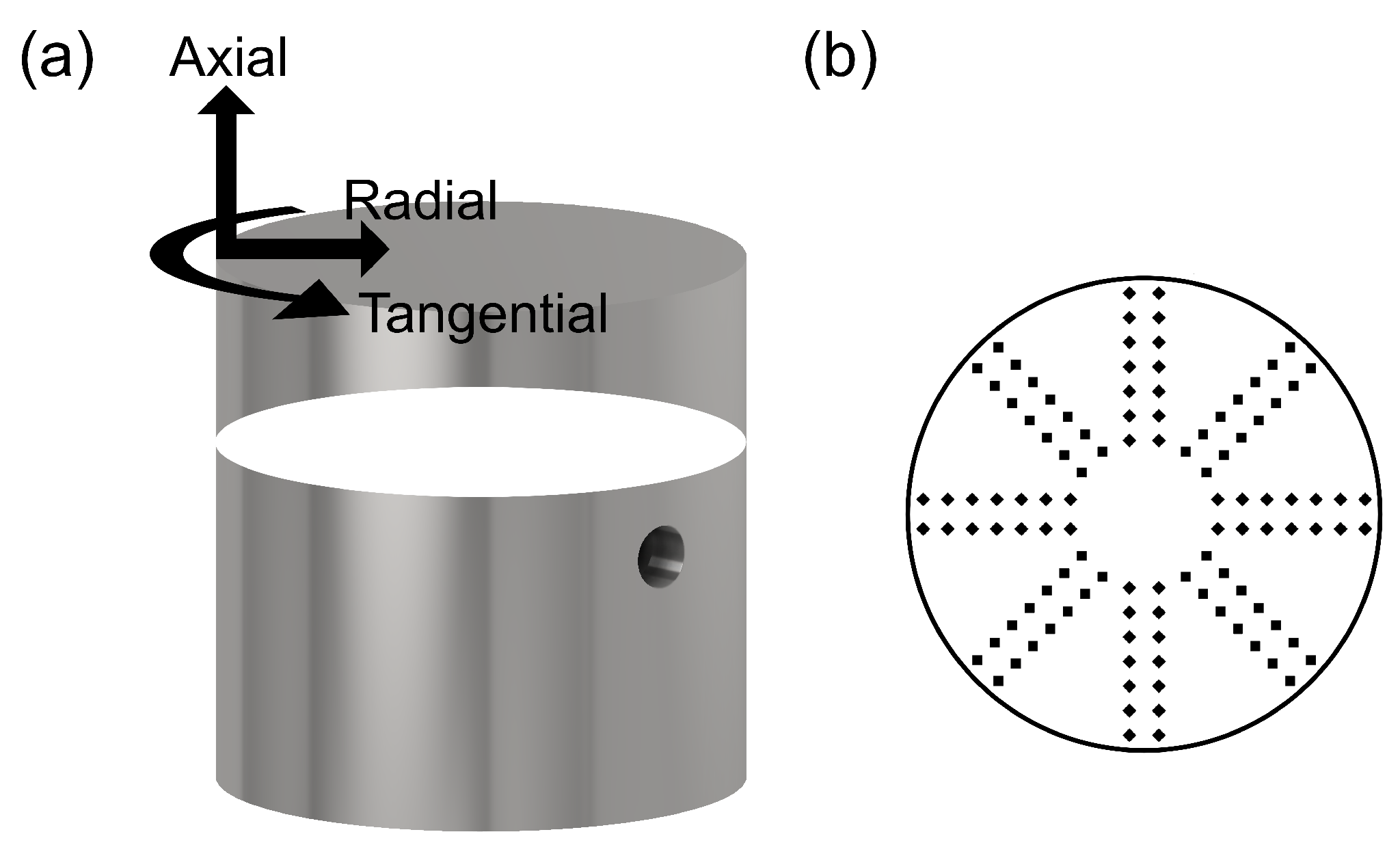

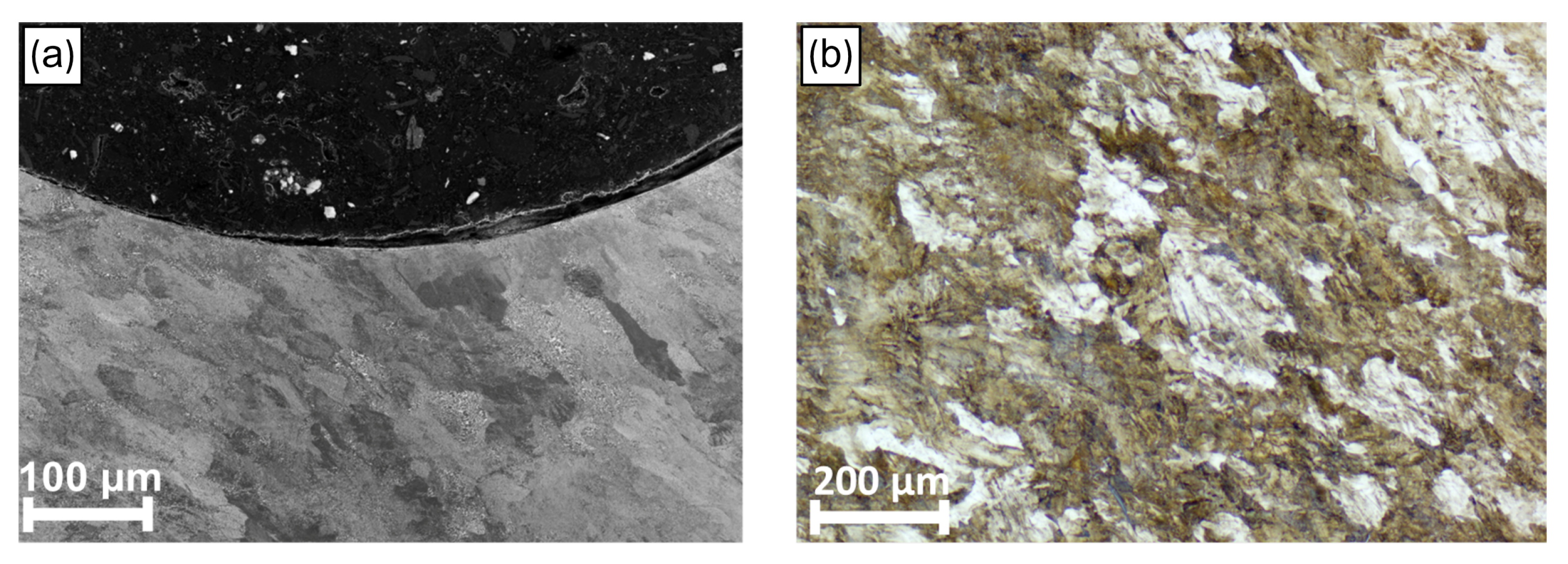

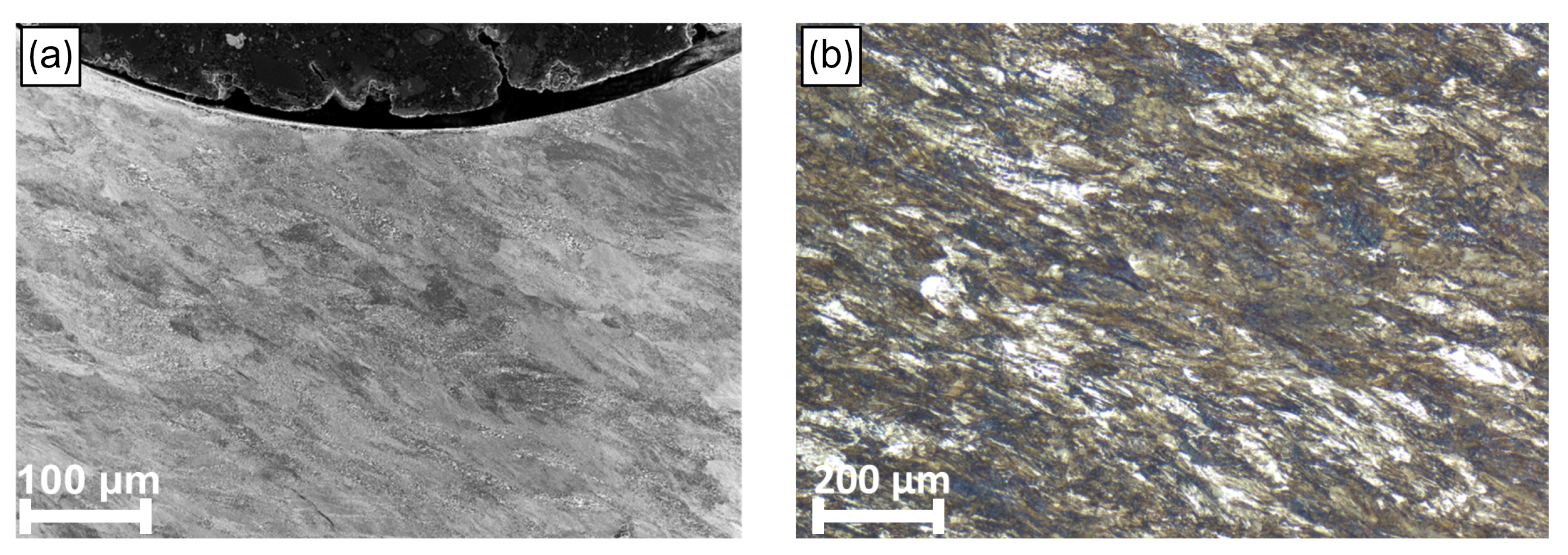

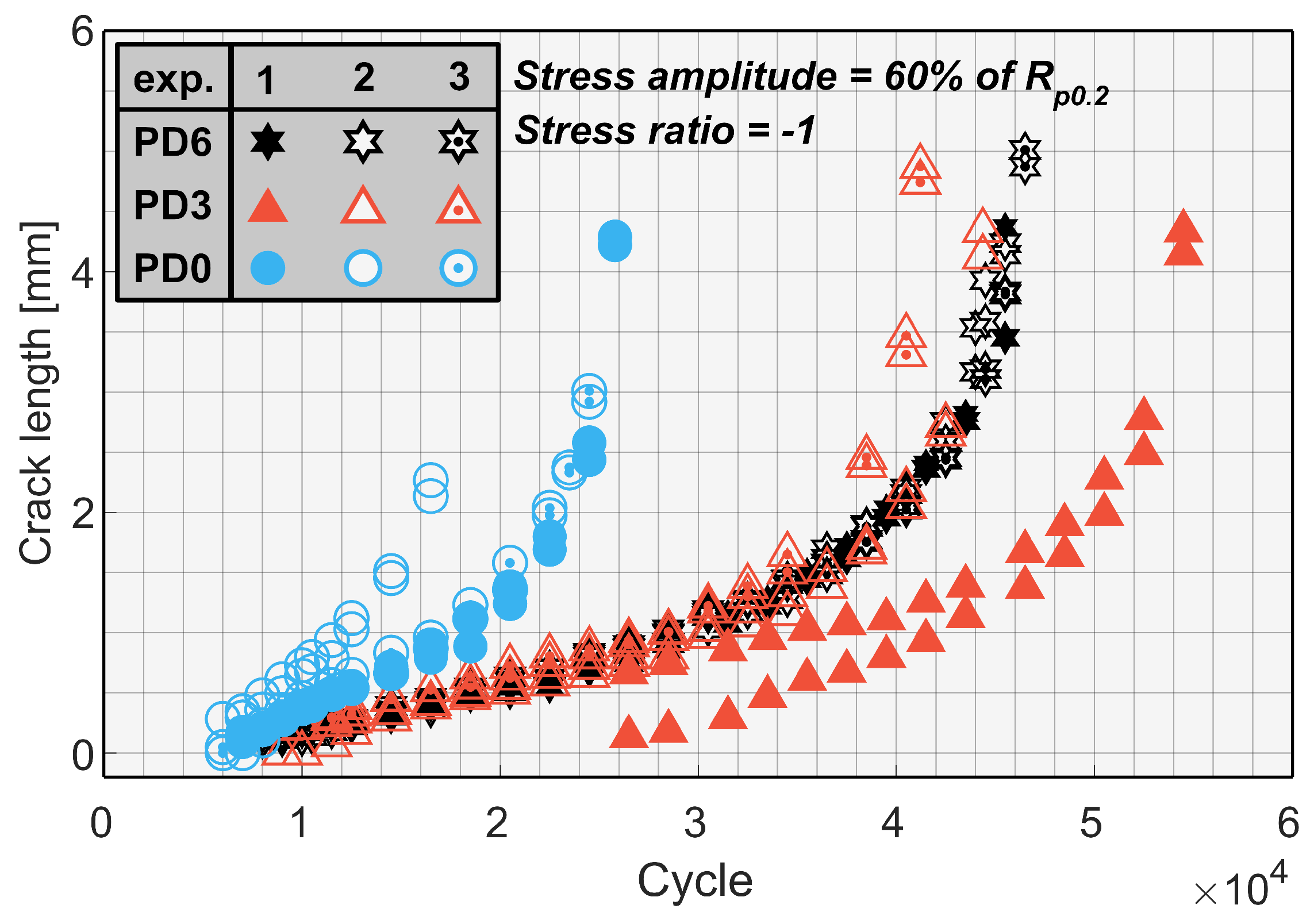
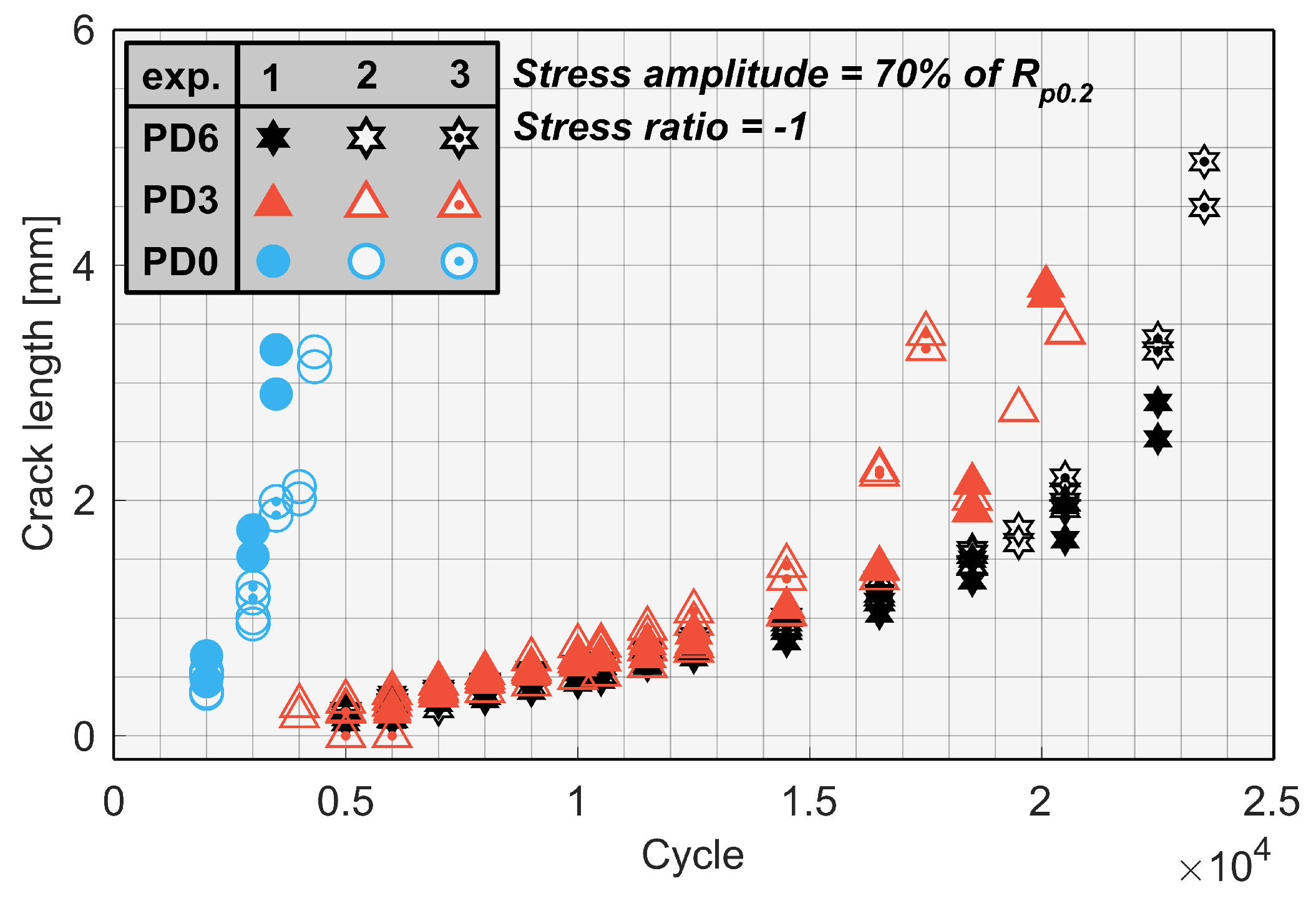


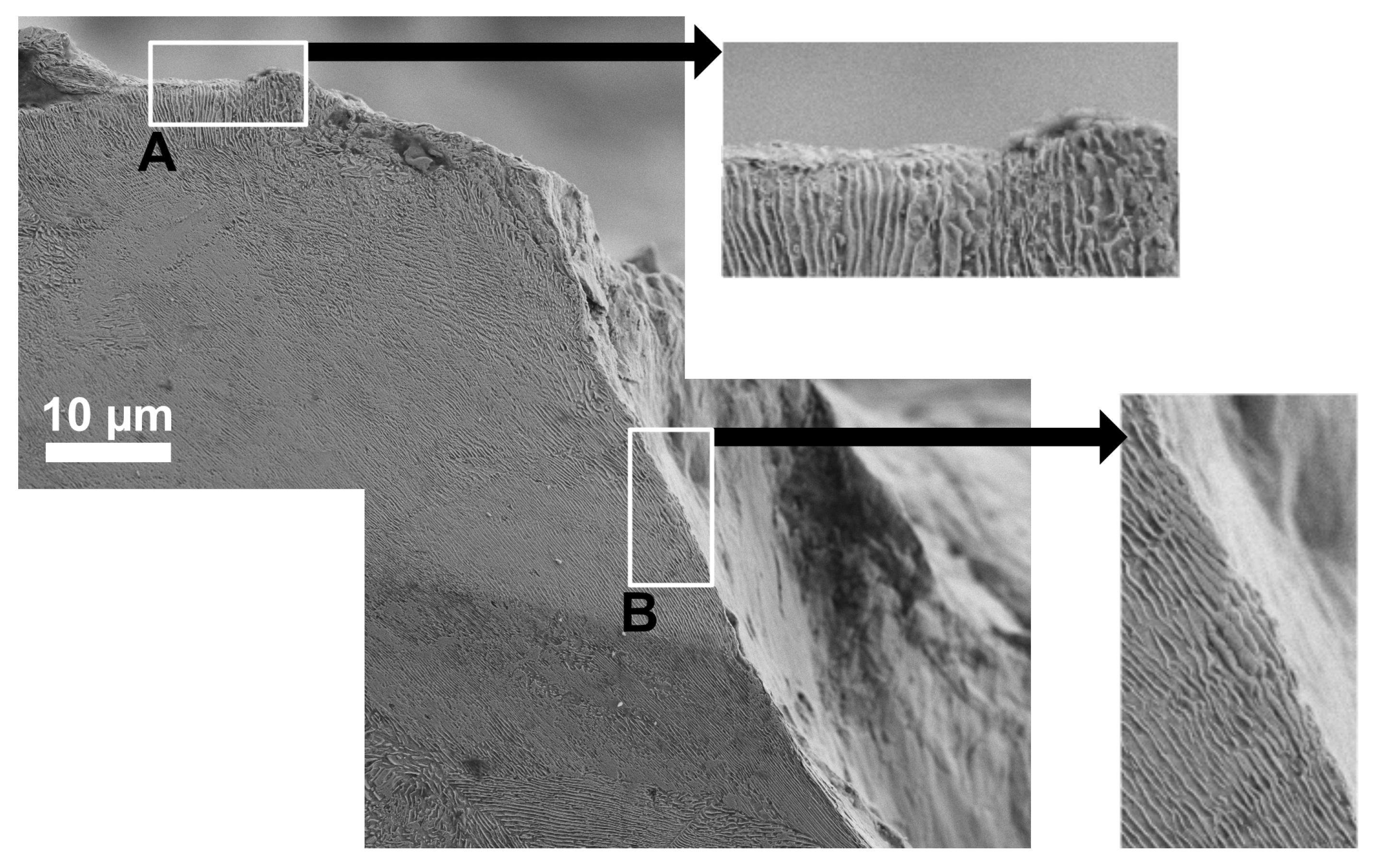

| Mn | C | Si | Cr | Cu | S | N | P | V | Al |
|---|---|---|---|---|---|---|---|---|---|
| 1.04 | 0.72 | 0.31 | 0.02 | 0.018 | 0.010 | 0.006 | 0.006 | <0.005 | 0.002 |
| Predeformation | Load | No. of Test Bars |
|---|---|---|
| PD0 | 0.7 | 3 |
| PD3 | 0.7 | 3 |
| PD6 | 0.7 | 3 |
| PD0 | 0.6 | 3 |
| PD3 | 0.6 | 3 |
| PD6 | 0.6 | 3 |
| PD3 | 0.74 ± 0.05 | 0.66 ± 0.05 |
| PD6 | 1.52 ± 0.05 | 1.38 ± 0.05 |
Disclaimer/Publisher’s Note: The statements, opinions and data contained in all publications are solely those of the individual author(s) and contributor(s) and not of MDPI and/or the editor(s). MDPI and/or the editor(s) disclaim responsibility for any injury to people or property resulting from any ideas, methods, instructions or products referred to in the content. |
© 2023 by the authors. Licensee MDPI, Basel, Switzerland. This article is an open access article distributed under the terms and conditions of the Creative Commons Attribution (CC BY) license (https://creativecommons.org/licenses/by/4.0/).
Share and Cite
Gren, D.; Ahlström, J. Fatigue Crack Propagation on Uniaxial Loading of Biaxially Predeformed Pearlitic Rail Steel. Metals 2023, 13, 1726. https://doi.org/10.3390/met13101726
Gren D, Ahlström J. Fatigue Crack Propagation on Uniaxial Loading of Biaxially Predeformed Pearlitic Rail Steel. Metals. 2023; 13(10):1726. https://doi.org/10.3390/met13101726
Chicago/Turabian StyleGren, Daniel, and Johan Ahlström. 2023. "Fatigue Crack Propagation on Uniaxial Loading of Biaxially Predeformed Pearlitic Rail Steel" Metals 13, no. 10: 1726. https://doi.org/10.3390/met13101726





